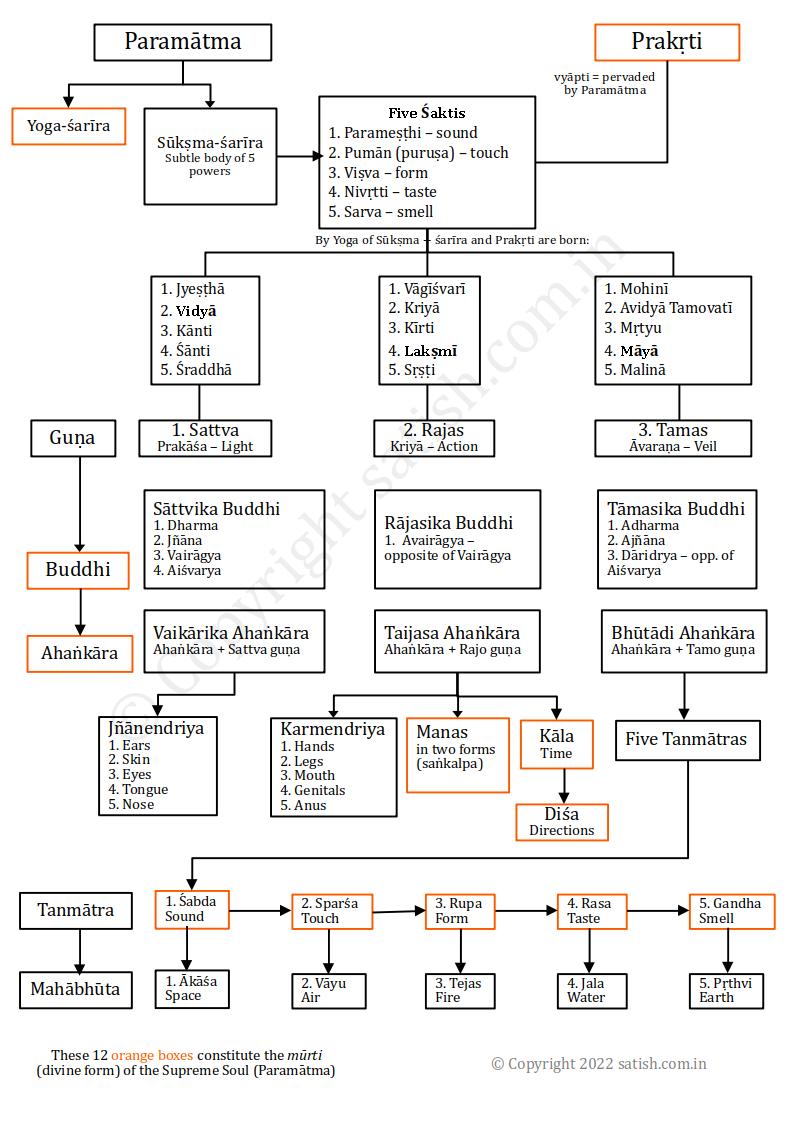Cosmology and Evolution in the Pān̄carātra Parama Saṃhitā
Parama Saṃhitā is an archetype of the Pān̄carātra literature. The “three gems” of Pān̄carātra are Sāttvata Saṃhitā, Pauṣkara Saṃhitā and Jayākhya Saṃhitā. They are perhaps the oldest surviving of the genre and are held in high esteem. Next in importance is the Ahirbudhnya Saṃhitā, which also happens to be the first ever Pān̄carātra text to be translated into English. And the fifth most important is the Parama Saṃhitā. This Parama Saṃhitā is included in many “lists of Pān̄carātra works” contained in the latter Pān̄carātra texts.
Parama Saṃhitā contains the famous Jitante Stotra, considered canonical by all Vaishnavas, including pūjya acharyas Madhva/Dvaita, Rāmanuja/Viṡiṣṭādvaita, Nimbārka/Bhēdābheda, etc. In fact, this stotra is so old that it is quoted in the Nārāyaṇīya of the Mahābhārata and even in the Ṛg-vidhāna 3.33.174ff an appendix to the Ṛg-vēda (search for “jitam.te”)! Ṡrī Yāmunācārya, the guru of Ṡrī Rāmānuja quotes Parama Saṃhitā 28.32-34 whereas Bhagavad Rāmānujācarya himself quotes Parama Saṃhitā 2.18-19, Sattvata Samh. 2.4 & 2.5 and Paushkara 38.293-294 & 38.306. Thus, this Saṃhitā is of great historicity and authenticity.
Chapter 2 “Creation” of the work provides a cosmological and ontological view of creation. Its detail is captured in the picture below:

Arrows represent the direction of evolution. We start with the premise that there exist two distinct principles, “Paramātma” and “Prakṛti”. Much of it parallels the Sāṅkhya theory.
Prakṛti
Prakṛti is described as the primary origin (pradhāna mūla) of all created things (bhava:s). It is also called by names such as Dravya (substance), Avyākṛta (un-formed, un-developed) and Vyakta (manifested, developed, evolved) (Ch 2.4). Some entities are not created (e.g. jīvātma, paramātma) and they are not in the scope of Prakṛti.
Prakṛti has four characteristics (Ch 2.28):
It is inanimate (acētana)
It is immeasurable (parārdha)
It is ever-existing (nitya)
It is ever-chaning (satata-vikriyā)
The qualities associated with Buddhi are the same as in Classical Sankhya.
Note that this means Prakṛti is not the divine consort Lakṣmī, because the former is inanimate where as the latter is not.
Prakṛti and Puruṣa – Viṣṭādvaita relation
The relation between Prakṛti and Puruṣa is universal pervasion (vāpti). The Paramātma pervades all of Prakṛti. Just as taste cannot be separated from water, the pervader cannot be separated from the object of pervasion. Thus, the pervader Puruṣa cannot be regarded as distinct from the pervaded Prakṛti. The two combined is different from either, and yet exist as if they were one (Ch 2.20-24). Bhagavad Rāmanuja calls this as “apṛthak-siddha” (inseparably distinct).
Since Prakṛti is inanimate, it cannot create otherwise (than by the direction of Puruṣa). Prakṛti manifests things by transforming causes (kāraṇa) into effects (kārya). When the effect ceases to exits, it is subsumed in the cause itself. As long as the world lasts, so long does Caturmukha-Brahma exists. When his life reaches its fulness, all creation comes does to an end. All created things reach back to their cause each its own, always (Ch 26.84, Ch 2.14). That is, “effect” is latent or hidden in the “cause” (pariṇāma-vāda).
Ontology
All these causes (kāraṇa:s) get absorbed in Avyakta; this itself is absorbed by Paramātma (Ch 26.85).